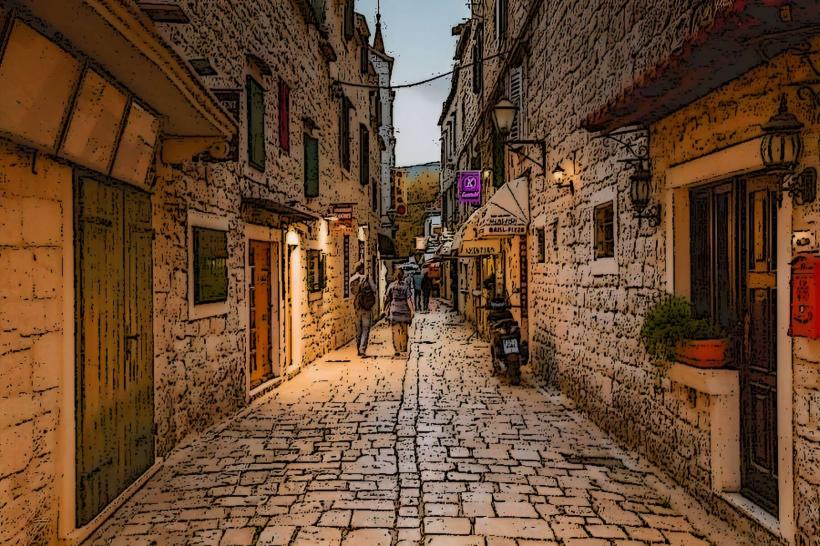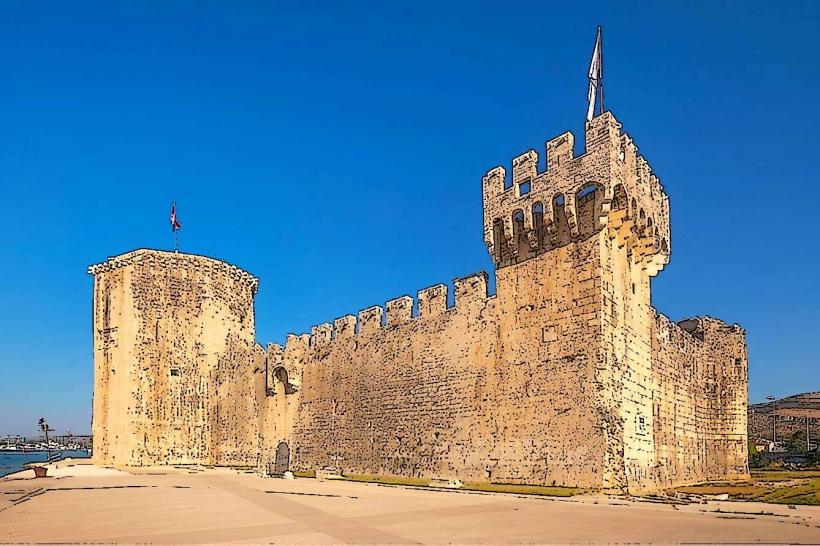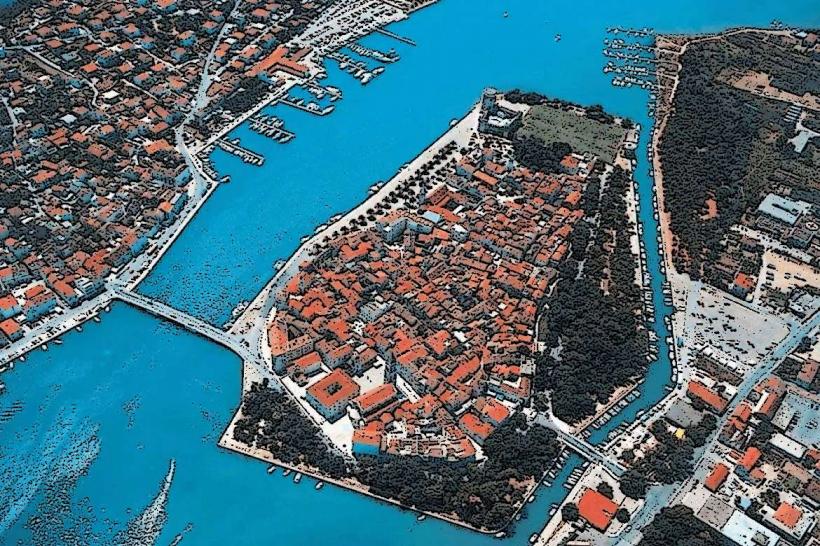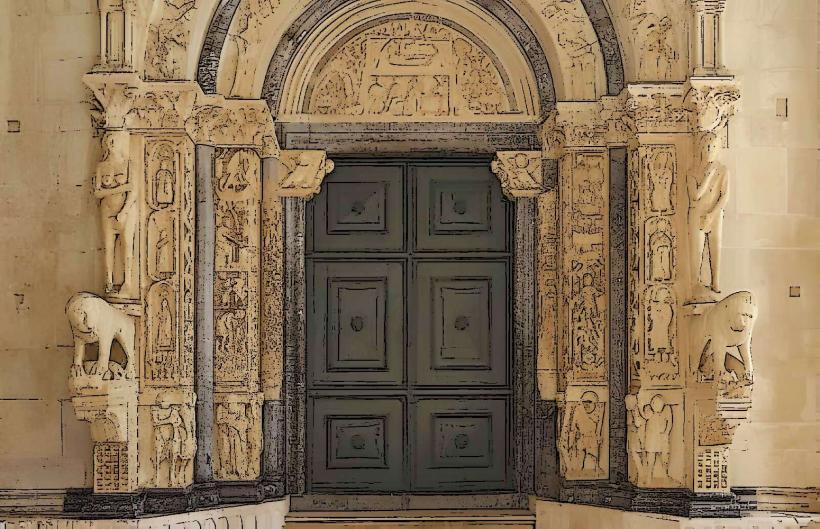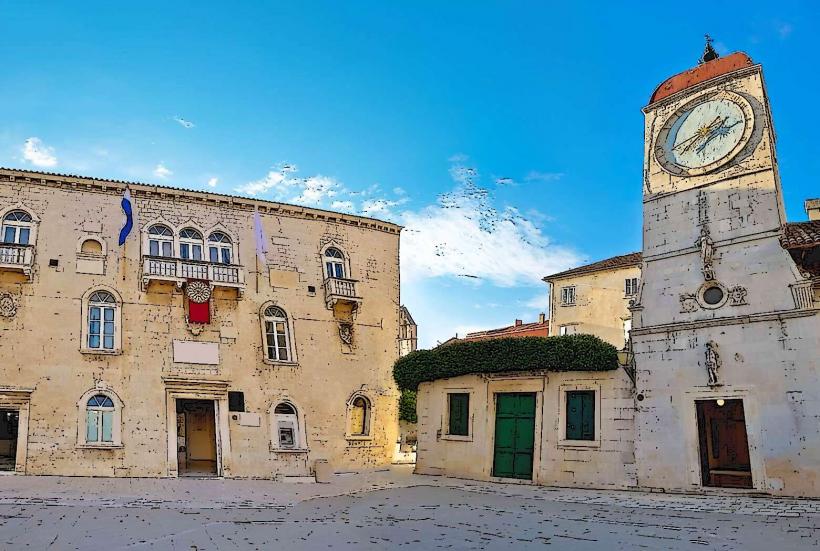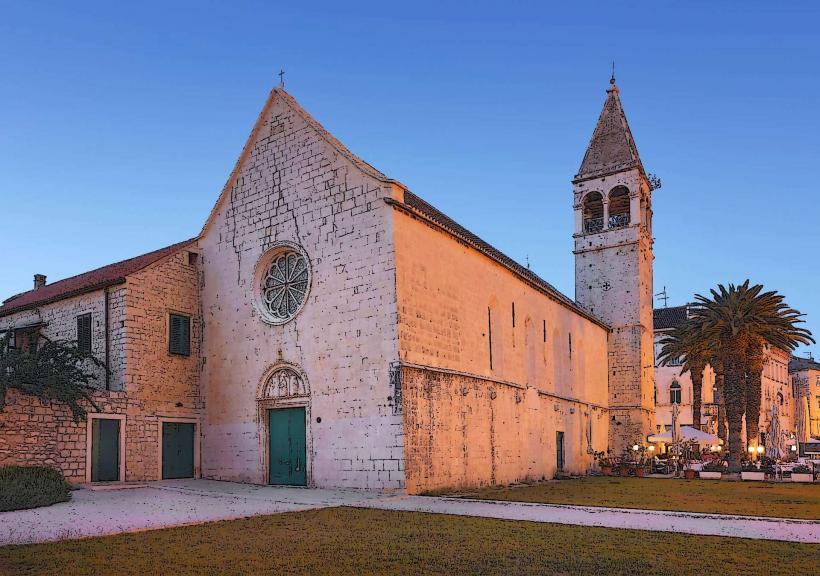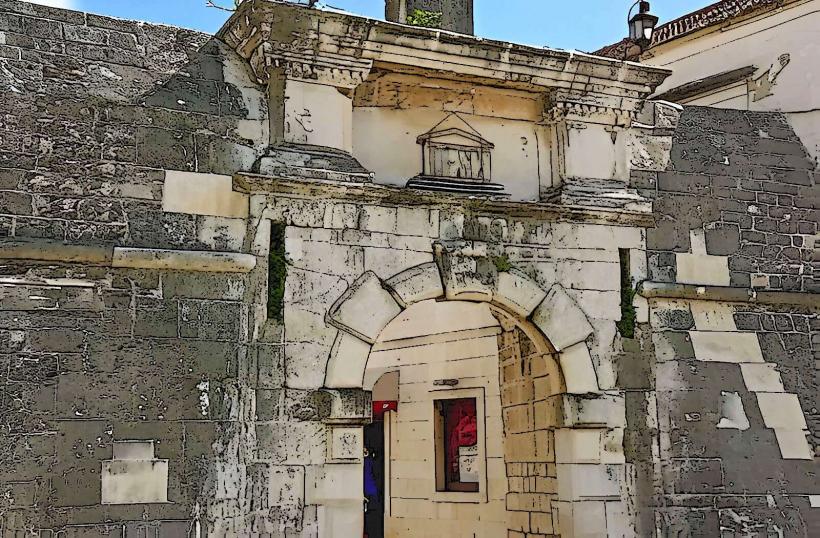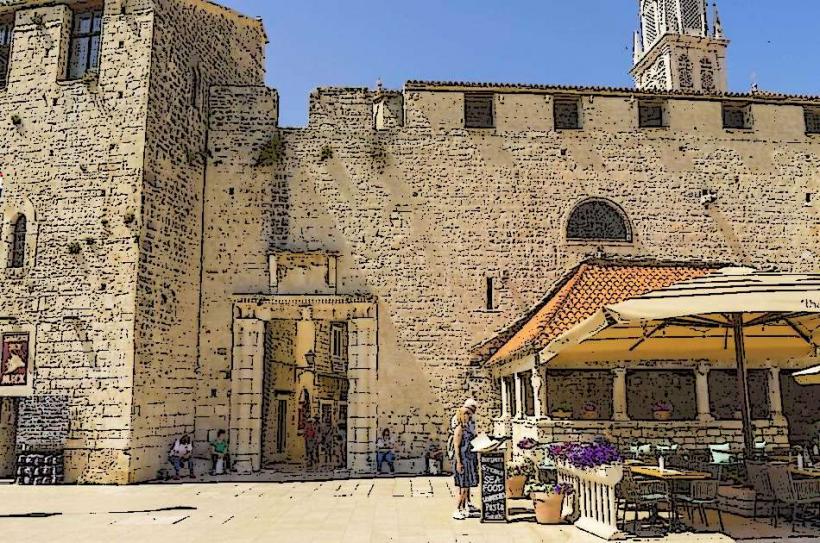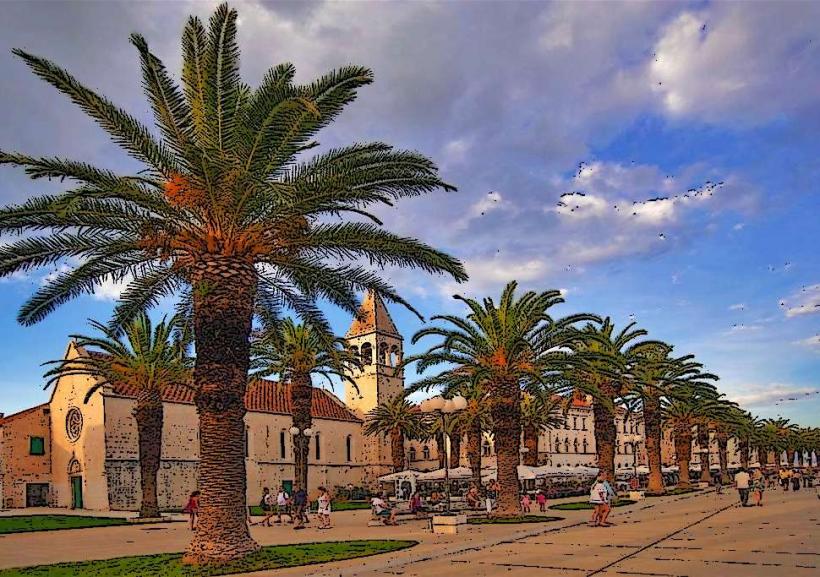Information
Landmark: St. Lawrence CathedralCity: Trogir
Country: Croatia
Continent: Europe
St. Lawrence Cathedral (Trogir Cathedral) – Overview
The Cathedral of St. Lawrence (Katedrala Sv. Lovre) is one of the most important landmarks in Trogir, Croatia. A remarkable example of Romanesque architecture, the cathedral has been an integral part of the town's history for centuries. Located in the heart of Trogir’s Old Town, this cathedral stands as a symbol of the town’s religious, architectural, and cultural heritage.
History of St. Lawrence Cathedral:
Early Foundations: The cathedral's origins date back to the 7th century, when a church dedicated to St. Lawrence was first built on the site. However, the current cathedral structure was constructed over several phases starting in the 13th century. Construction began around 1213 and continued for several centuries, with the final touches completed by the 17th century.
Romanesque and Gothic Styles: The cathedral's design reflects a blend of Romanesque and Gothic architectural styles. The main structure, including its aisles, transept, and apse, is predominantly Romanesque, while the nave and certain decorative elements exhibit Gothic influences.
Master Radovan: The cathedral’s most famous feature is its main portal, known as the Radovan Portal, which was created by the master sculptor Master Radovan in the late 13th century. This exquisitely detailed portal is considered one of the finest examples of Romanesque sculpture in Croatia.
Architectural Features of St. Lawrence Cathedral:
1. Radovan Portal:
- The Radovan Portal is the cathedral’s most iconic feature, located at the main entrance. This sculptural masterpiece is celebrated for its detailed reliefs, depicting scenes from biblical stories such as the Last Judgment and the life of Christ. The portal's intricate carvings, especially the scenes of angels, saints, and the Lamb of God, represent the Romanesque style's emphasis on symbolic religious imagery.
2. Bell Tower:
The cathedral’s bell tower is a prominent feature of the Trogir skyline. Standing at a height of 47 meters (154 feet), the tower offers sweeping views of Trogir and the Adriatic Sea. The tower was added to the cathedral in the 14th century and is a stunning example of Gothic architecture with a pyramid-shaped roof.
Visitors can climb to the top of the tower to enjoy panoramic views of Trogir and the surrounding coastline, including views of the nearby Kamerlengo Fortress and the Trogir harbor.
3. Interior:
The interior of the cathedral is spacious and serene, with Romanesque columns, arched ceilings, and Gothic vaulting. The church is filled with religious artwork, including frescoes, wooden altars, and statues of saints and other figures from Christian iconography.
The apse features a beautiful altar, and the floor is made of stone slabs with inscriptions and decorative details that enhance the church's sacred ambiance.
4. Treasury:
- The cathedral houses a treasury that contains important religious artifacts, including liturgical objects, vestments, and church relics. Some of these items are centuries old, providing visitors with an insight into the cathedral's rich religious history.
5. Cloister:
- Adjacent to the cathedral is the cloister, a Gothic-style courtyard surrounded by arcades. The cloister is an important feature of the cathedral complex, offering a peaceful space for contemplation. The courtyard is often used for cultural events and exhibitions, and its ornate stonework adds to the beauty of the site.
Significance and Cultural Importance:
The Cathedral of St. Lawrence is not only a religious site but also a cultural symbol for the town of Trogir. It has played a significant role in the spiritual and social life of the town for over eight centuries. As a UNESCO World Heritage site, it is recognized for its architectural and artistic value, drawing visitors from around the world.
The cathedral’s Radovan Portal is considered one of the finest examples of Romanesque sculpture in Croatia and is one of the main reasons why the cathedral is so highly regarded. Its historic and artistic significance make it an essential part of any visit to Trogir.
Throughout the year, the cathedral hosts various religious ceremonies, including mass, weddings, and feasts. It is also a venue for cultural events, such as concerts and religious festivals, due to its excellent acoustics and spiritual atmosphere.
Visiting St. Lawrence Cathedral:
Location: The Cathedral is located in the main square of Trogir Old Town, making it easily accessible for visitors exploring the town.
Opening Hours: The cathedral is open to visitors throughout the week, though it is important to check specific hours for religious services or events, as these may limit public access. It is recommended to visit early in the morning or later in the afternoon to avoid crowds.
Entrance: While access to the cathedral is generally free, there is typically a small fee for visiting the bell tower and treasury, which are among the most popular parts of the complex.
Guided Tours: For those interested in learning more about the cathedral's history and significance, guided tours are available. These tours provide a deeper understanding of the architecture, artworks, and religious context of the cathedral.
Accessibility: The cathedral is easily accessible for visitors of all ages. However, the bell tower requires a climb up narrow, winding stairs, which may not be suitable for individuals with mobility issues.
Conclusion:
The Cathedral of St. Lawrence is one of Trogir's most treasured landmarks, offering visitors a remarkable blend of Romanesque and Gothic architecture, as well as an abundance of religious and artistic history. From the stunning Radovan Portal to the panoramic views from the bell tower, the cathedral is an essential destination for anyone visiting this UNESCO-listed town. Whether you're interested in its historical significance, architectural beauty, or the opportunity to experience the spiritual atmosphere, the cathedral remains a key symbol of Trogir's enduring cultural and religious legacy.

